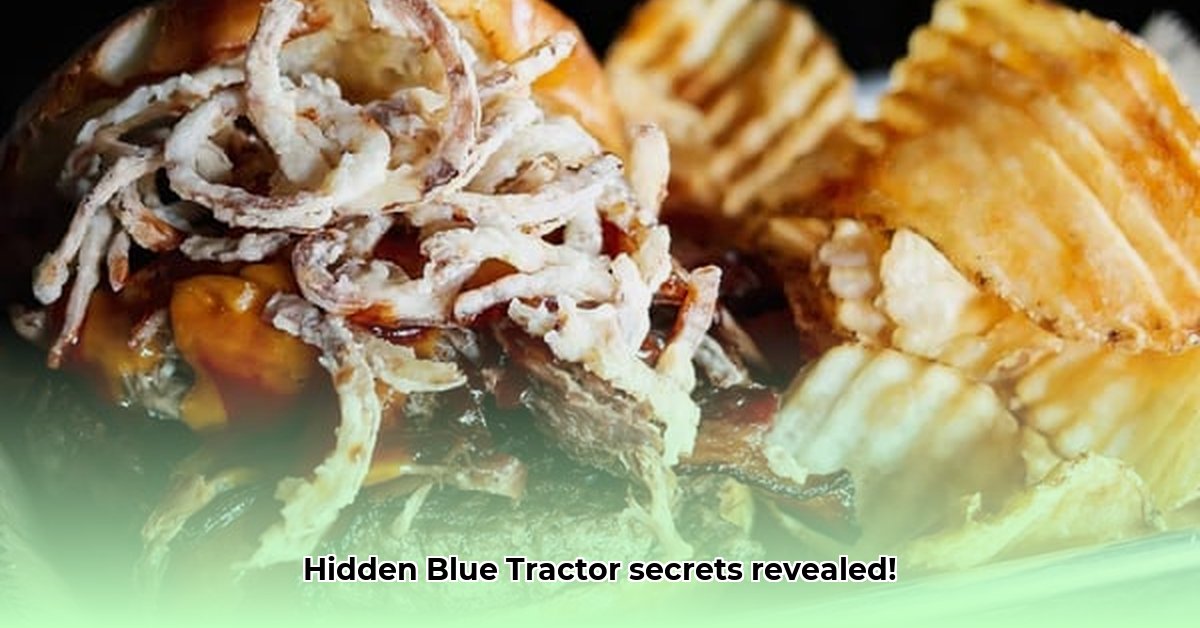
Understanding Your Current Menu
The Blue Tractor Cookshop already possesses a strong foundation. Your smoked meats are a clear customer favorite, offering a unique selling proposition. However, the menu's current structure lacks clarity and data-driven insights. This limits your ability to maximize profitability and customer satisfaction. Without a robust system for tracking sales data, crucial opportunities for optimization are missed. This guide provides a structured approach to elevate your menu's performance. For additional visual aids, check out these tractor models.
Putting Data to Work: A Step-by-Step Guide
This isn't guesswork; it's a data-driven approach to menu optimization.
Step 1: Implement a Point-of-Sale (POS) System
A modern POS (Point-of-Sale) system is essential for tracking sales, costs, and customer preferences. This data is the bedrock of informed menu decisions. Popular options include Toast, Square, and Lightspeed. Research various systems to find the best fit for your restaurant's size and needs. Investing in a POS system is crucial for data-driven decision-making, directly impacting profitability. Don't you want to know what's selling and what isn't?
Step 2: Analyze Sales Data: Identify Your Menu's Stars, Puzzles, Plowhorses, and Dogs
With your POS system in place, analyze your sales data to identify your menu's performance categories:
- Stars: High profitability and popularity. These are your cash cows!
- Puzzles: High profitability but low popularity. These items have profit potential, but marketing or adjustments might be needed.
- Plowhorses: High popularity but low profitability. Consider raising prices or reducing costs.
- Dogs: Low profitability and low popularity. These are candidates for menu removal.
This categorization empowers strategic menu adjustments. How can you effectively leverage your best-selling items and improve the performance of others?
Step 3: Streamline Menu Structure and Descriptions
A well-structured menu is crucial for customer navigation and decision-making. Organize your menu into logical sections (appetizers, mains, desserts, etc.). Next, craft enticing descriptions that highlight the unique selling points of each dish. For example, instead of "BBQ Brisket Sandwich," try "Tender Smoked Brisket, tangy BBQ sauce, on a toasted brioche bun." The difference is substantial.
- Example: Instead of simply listing "Burger," try "Juicy Beef Burger: 1/3 lb patty, cheddar cheese, crispy bacon, lettuce, tomato, onion, and our signature sauce on a brioche bun."
Step 4: Strategic Pricing and Value Perception
Pricing directly impacts profitability. Analyze your cost of goods sold (COGS) and market prices to ensure your dishes are appropriately priced. Consider adjusting prices slightly for "Plowhorses" to improve their profitability without alienating customers. Remember, your menu’s pricing structure influences customer perception of value.
Step 5: The Power of Limited-Time Offers (LTOs)
LTOs (Limited-Time Offers) generate excitement, drive sales, and allow for creative experimentation. Use seasonal ingredients or customer favorites with a twist to create compelling LTOs. This also helps gauge customer interest in new items before fully adding them to the regular menu. What seasonal ingredients can you incorporate to create new, attractive dishes?
Step 6: Actively Gather Customer Feedback
Customer feedback is invaluable. Implement a system for gathering feedback, whether through online surveys, comment cards, or your POS system. This direct line to your customers offers priceless insights into preferences and potential areas for improvement. What channels will you use to gather feedback effectively?
Long-Term Strategies for Continued Success
Menu optimization is an ongoing process.
- A/B Testing: Conduct A/B tests using your POS system or digital menu platforms to compare different menu versions (e.g., varying descriptions or prices). This data-driven approach fine-tunes your menu for optimal results.
- Menu Diversification: Cautiously expand your menu offerings by introducing new categories or themed nights; cater to seasonal trends. Thorough tracking is key to determine success.
- Cost Analysis: Monitor ingredient costs regularly, exploring local suppliers for better pricing and optimizing portion sizes to maximize profit margins.
By consistently implementing these steps, the Blue Tractor Cookshop can transform its menu from a simple list of dishes into a powerful engine for growth and profitability. Remember, data-driven decisions, customer-centric approaches, and a commitment to continuous improvement are your keys to long-term success.